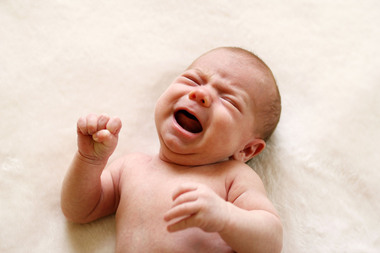
The immune system of an infant has a lot to do in the first phase of life. It is therefore important to prevent the dangerous inflammation of the navel. However, if it does occur, immediate action must be taken to avoid complications.
An inflammation of the navel, called omphalitis in medicine, occurs mainly in babies in the first weeks of life. However, due to the umbilical hygiene used nowadays, such an infection is becoming increasingly rare. According to the World Health Organization (WHO), umbilical infections are a common cause of neonatal mortality worldwide, but the incidence and mortality rate of omphalitis in industrialized countries is very low. It is estimated that 0.2 to 0.7 percent of all newborns are affected. Premature and sick children are more vulnerable.
The causes in babies are mostly bacteria that cause this infection in the first days after birth. In the first weeks of life, the umbilical stump is still an open wound into which pathogens can penetrate relatively easily. After birth, the umbilical cord is cut and the remaining umbilical stump is fitted with a clamp. The future bellybutton must first heal, which takes a few weeks. During this time, pathogens can enter the open wound, which can then trigger an inflammation of the navel. Although these pathogens are normally rather harmless, newborns with their immature immune system are still susceptible. The infant is born from a relatively germ-free environment and is confronted with a wide variety of pathogens. The immune system may therefore not be able to fend them off.
Risk factors include low birth weight, pre-existing infections or poor general health. The symptoms are redness, swelling, heat, protrusion of the navel with possible bloody and/or purulent discharge. This infection should be treated as soon as possible, as it can develop into a life-threatening condition. If the inflammation is already advanced, fever, too low blood pressure, an accelerated heartbeat and apathy are added.
The inflammation of the navel in babies is treated as soon as possible with suitable medication. In mild cases an external application can be made, otherwise a hospital stay may be necessary, during which the medicine is given by infusion. The infant can be monitored here and any complications can be detected and treated early. If abscesses or necroses in the region of the navel are added, surgical interventions are usually necessary to remove affected tissue.
Prevention is important so that newborn babies do not develop inflammation of the navel. A hygienic but relaxed approach to the baby's fresh navel is usually sufficient nowadays. In the past, powders and disinfectants were generally used for navel care, which is no longer the case today. Also, bathing in the first weeks of life is no longer strictly rejected today. However, the navel should be kept dry and clean and, above all, free of urine and stool. Turning the diaper underneath the navel helps.
* This text may contain translation errors as the translation was performed by an online translation tool.










